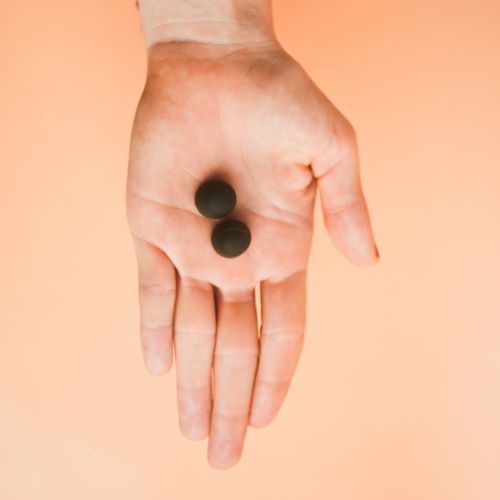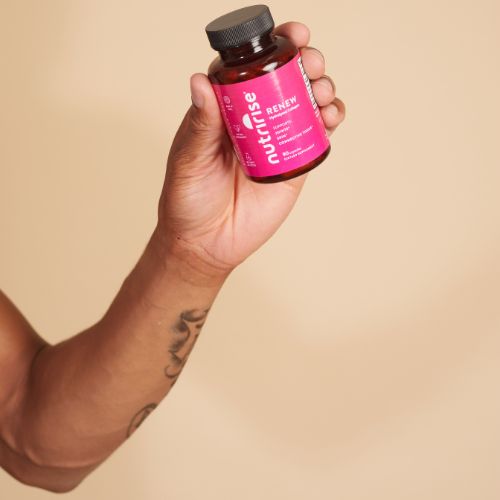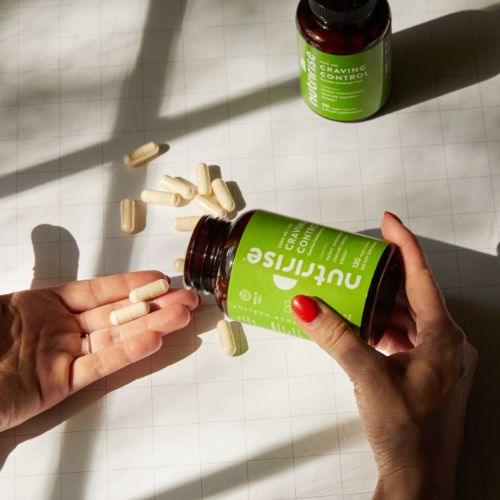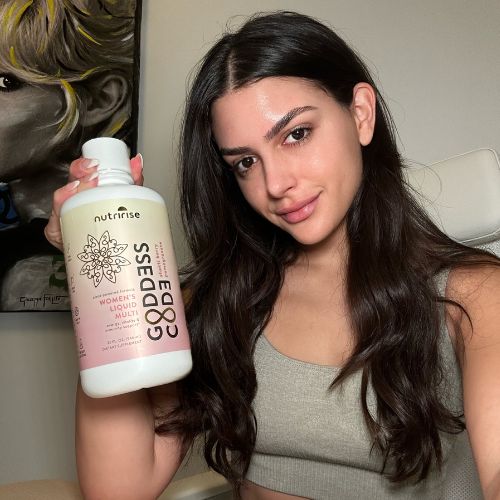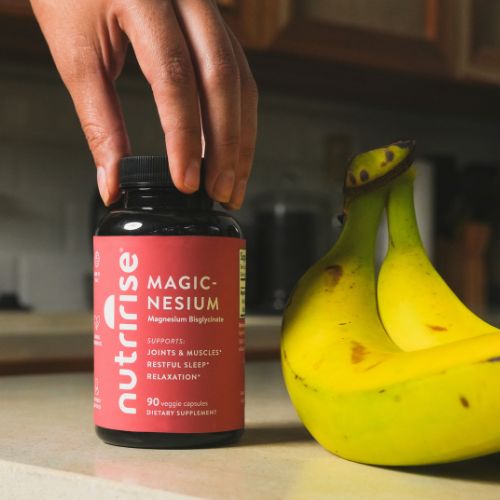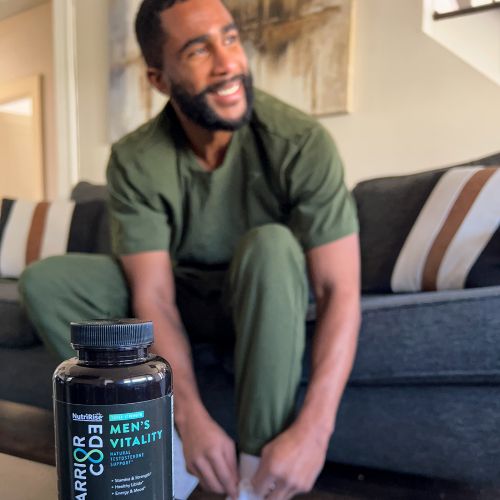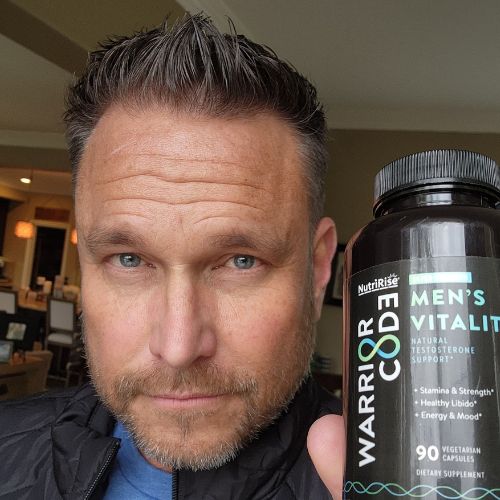The Incredible Circulatory System

People have studied the circulatory and cardiovascular system for thousands of years, with some of the earliest writings on the subject appearing in Egyptian medical documents from the 16th century B.C. However, the mechanisms of this amazingly complex system were only described correctly in the 17th century A.D [1].
Your circulatory system consists of a few essential components: the heart, lungs, and vessels that carry blood containing oxygen, carbon dioxide, nutrients, and hormones to and from your cells, sustaining life every second. Within cardiovascular circulation, there are two parts, known as systemic and pulmonary:
Systemic circulation involves moving blood between your heart and the rest of your body. This process sends oxygenated blood (red) out from the aorta in your heart and your arteries to your cells. It then returns the deoxygenated blood (blue) through your veins to the heart, where it will go into the pulmonary circulation.
Pulmonary circulation moves blood between your heart and your lungs to transport deoxygenated blood (blue) to the lungs to absorb oxygen from the air you breathe and release carbon dioxide to be breathed out. Once the blood is oxygenated again (red), this oxygen-rich blood travels to the heart and moves into the systemic circulation. And the cycle continues!
[3]
Your circulatory system is truly brilliant since it carries blood in two parallel circuits which branch out to different parts of the body. Why is this important? If the blood went through each organ in turn in a single chain, the organs at the end of the chain would receive less oxygen and nutrients and have an increased build-up of toxins than the organs first in line. The parallel circuit system solves this potential problem! [4]
The Different Components of Your Circulatory System
Your Heart, The Hero!

Your heart is the muscular pump of the system and is about the size of your fist. Its powerful contractions move blood through all the body’s vessels and are controlled by electrical signals.
Every day around 2,000 gallons of blood is pumped through the heart [5], and it never takes a break! Your heart consists of four chambers (see diagram below):
- The right atrium
- The right ventricle
- The left atrium
- The left ventricle
The left ventricle of the heart pumps out oxygen-rich blood throughout the body. The right ventricle pumps the deoxygenated blood, which has been returned to the heart, out through the pulmonary artery into the lungs to pick up more oxygen [6].
The Blood

There’s more to blood than meets the eye. If you were to examine your blood with a powerful microscope, you would find it packed with all sorts of different components. About half of your blood is plasma, a watery substance that contains glucose, hormones, proteins, mineral salts, fats, and vitamins. Your blood is also made up of red blood cells, white blood cells, and platelets [7].
Imagine red blood cells are like the body’s cellular lungs. Their job is to pick up the oxygen you breathe and carry it to every cell while collecting the carbon dioxide you need to breathe out. Their interesting round and concave shape gives them a big surface area to absorb more oxygen and also helps them squeeze through small blood vessels [7].
On the other hand, white blood cells are an essential component of your immune system, helping to fight infections and other diseases. While platelets, when activated, help your blood to clot in response to an injury [7].
The Mighty Blood Vessels
You can think of your vessels as the pipes of your circulatory system. The arteries are the vessels that take blood away from your heart wherever it needs to go in your body.
Arteries have to withstand high pressure; therefore, they contain strong elastic-like fibers that enable them to stretch accordingly. They also contain smooth muscle cells, which allow them to change their diameter to control blood flow rate [8].
When you’re under stress, for instance, these smooth muscle cells contract, narrowing the arteries, which is called “vasoconstriction,” causing an increase in blood pressure and get this, most heart attacks occur on Mondays, which is thought to be linked to increased work stress! [9]

Unlike the arteries, your veins take deoxygenated blood towards your heart, and the blood pressure within your veins is relatively low. Since the blood has less force in your veins, most have special valves to prevent backflow. These valves are critical so that blood doesn’t succumb to gravity and pool in your legs!
The contraction of skeletal muscles is another essential mechanism that keeps blood flowing through the veins.
For example, your calf muscles are vital for the upward movement of blood in the vascular system since these muscles act as a “pump” for the deep leg veins. This is one of the reasons physical activity is so essential for enhancing circulatory health! And did you know that even the changes in pressure caused by breathing in and out are one of the mechanisms which help keep blood flowing in your veins?
Lastly, the capillaries are the smallest of the blood vessels. They connect the arteries and veins and transport oxygen and nutrients from the bloodstream directly to your tissues. Capillaries can be so tiny, in fact, that even a single red blood cell might have to squeeze its way through! [8].
Complications Of The Circulatory System
So, now that you have a better understanding of how the circulatory system works, let's take a look at some of the more general signs that your circulation might need some assistance:
Potential signs of poor circulation
- Pins and needles sensations
- Pale/bluish skin tone
- Fatigue
- Cold fingers and toes
- Numbness
- Heaviness in legs or feet
- Swollen veins or arteries
If you experience any of these symptoms, you must seek help from your primary health care provider as soon as possible.
There are quite a few diseases and conditions that can affect the circulatory system, many of which are leading causes of death in the United States. It's essential to know the signs and take action. Here’s a brief overview of some of the most common ones below:
Atherosclerosis is the buildup of cholesterol, fat, and other substances in the walls of the arteries. This buildup is called “plaque.” Over time, as this plaque increases, the inner cavity of the arteries narrows, restricting blood flow (see the diagram below). Sometimes the plaque can burst, causing clots to form. When this blockage affects blood flow to the heart, it’s known as Coronary Artery Disease [10].

Heart Attacks are a medical emergency caused by a blockage of blood flow to the heart muscle. Without blood flow, tissues in the body lose oxygen and can die. Symptoms usually include chest pain, dizziness, shortness of breath, and pain in one or both arms [11].
Arrhythmia is a condition in which the electrical impulses in the heart don’t work correctly. Arrhythmia can cause an irregular heartbeat or a very fast or too slow heartbeat. This often leads to feelings of “fluttering” in the chest, shortness of breath, and sometimes even chest pain, fainting, or dizziness [12].
High Cholesterol (Hypercholesterolemia) occurs when there is an abnormally high level of cholesterol in the blood plasma. It is generally characterized by total cholesterol levels and, more specifically, LDL cholesterol, known as the “bad” cholesterol that can build up in arteries. While high cholesterol usually doesn’t have any symptoms, it can impair normal blood flow and circulation, increasing the risk of a heart attack or even stroke [13].
High Blood Pressure (Hypertension) is a widespread condition in which the pressure of blood against the arterial walls is abnormally high, to the point where it may cause damage over time, increasing the risk of heart attack or stroke. It’s usually defined as having a blood pressure reading over 140/90 and often doesn’t present any symptoms [14].
Stroke is a medical emergency in which the blood supply to parts of your brain is interrupted or reduced. The brain tissue is cut off from oxygen and nutrients, causing brain cells to die within minutes. Symptoms usually begin with confusion, sudden difficulty speaking or seeing, and numbness/weakness in one side of the body or face [15].
Chronic Venous Insufficiency occurs when the veins in the legs don’t function properly, meaning blood can’t move back up to the heart as it should. This causes blood to collect in these veins, leading to symptoms like varicose veins, swelling or skin changes in the affected leg, and sometimes leg ulcers [16].
Deep Vein Thrombosis occurs when a blood clot forms in one or more of the deep veins in your body, usually the legs (see infographic below). It can lead to leg pain or swelling symptoms, but it’s common for there to be no symptoms. This condition can be severe since these clots can loosen and lodge in the lungs, resulting in a pulmonary embolism [17].
Peripheral Vascular Disease is a vascular disorder that progresses slowly over time, leading to reduced blood flow to the limbs. It is characterized by narrowing blood vessels due to atherosclerosis. Symptoms typically include leg pain and weakness, mainly when walking, and cool skin [18].
Risk Factors For Circulatory Diseases

Epidemiological studies reveal that particular lifestyle, environmental, and genetic factors increase your risk of developing circulatory complications and diseases. It’s also clear that a common risk factor for these diseases is increased levels of inflammation, which can damage the vessels of the circulatory system over time.
Researchers have found that higher inflammatory biomarker levels known as C-Reactive Protein are significantly linked to an increased risk of circulatory diseases [19].
Here are some of the most important modifiable risk factors to take note of:
Smoking
It might be time to quit since cigarette smoking is a significant risk factor for developing circulatory diseases. So much so that in the United States, 33% of all cardiovascular-related deaths are attributed to smoking. Smoking increases heart rate and blood pressure and can thicken your blood, causing your heart to work harder.
Smoking also damages the lining of cells on the inner wall of your blood vessels. It can even alter the chemistry of your blood, increasing plaque formation, which can eventually lead to atherosclerosis. [20]
Alcohol intake
Long-term high alcohol intake can increase blood pressure and heart rate and even weaken your heart muscles. Over time, this rise in blood pressure increases your risk of heart attack and stroke [21]
Low physical activity
Physical inactivity is an established risk factor for many circulatory diseases and even ranks as high as smoking, high blood pressure, and elevated cholesterol. Around 35% of heart disease deaths may be related to physical inactivity, with only 1 in 4 US adults getting enough exercise! [22]
Obesity
Obesity is a current health epidemic in the United States and is associated with hypertension, high fat levels in the blood, diabetes, and elevated levels of inflammatory chemicals, which can all increase the risk of developing circulatory diseases and complications [23]
High Blood Pressure & Cholesterol
Among the other risk factors, high blood pressure and cholesterol levels are noted as the most significant risks for developing circulatory diseases [24] [25]
Remember, the above risk factors are considered “modifiable,” meaning that you have the power to reduce your risk based on dietary and lifestyle decisions, which is excellent news! However, some risk factors are non-modifiable such as aging, gender (men are at higher risk than women), and having a family history of circulatory diseases.
How To Keep Your Circulation Healthy
Now that you’re all clued up, it’s time to learn about a few ways to take your circulatory health into your own hands, starting today!
-
A Nutrient-Dense, Fiber-Rich Diet

While circulatory diseases constitute a significant issue worldwide, researchers started to notice that people in the Mediterranean regions of the world had significantly lower incidences of cardiovascular disease.
After some investigation, they concluded that the type of diet they were eating protected their circulatory health. Randomized controlled trials have helped to confirm this theory.
These studies show that eating a Mediterranean-style diet could reduce LDL cholesterol levels and the risk of developing cardiovascular disease by up to an impressive 30% [26].
So, how do you follow a Mediterranean diet, you may ask? The definition of the Mediterranean diet can differ; however, its basic principles remain pretty consistent. Overall it is a balanced, nutrient-dense, fiber-rich diet packed with whole foods, healthy fats, and polyphenols to reduce inflammation and oxidative stress.
Here are some guidelines that might help you on your way towards eating for heart health [27]:
- Aim for 6 servings of vegetables every day
- Aim for 2-3 servings of fruit per day, especially brightly colored berries!
- Aim for 1-2 servings of whole grains with each meal
- Aim for 1-2 servings of nuts/seeds per day
- Aim for around 3 servings of legumes per week
- Aim to include oily fish in your diet at least twice a week
- Aim for only moderate portions of poultry and red meat, with around 2 servings of each per week.

Now is the time to get moving! Regular physical activity significantly decreases the risk of developing circulatory diseases [28]. Exercise also helps prevent the development of diabetes, obesity, and hypertension, which are all risk factors for the development of circulatory diseases in and of themselves.
The American Heart Association recommends getting at least 150 minutes per week of moderate aerobic exercise (think brisk walking, running, dancing, swimming, or cycling) [29].
Any activity is better than none, though, so even if you can just focus on sitting less and moving around a bit more throughout the day, you’re on your way to better circulation!
-
Show Your Circulation Some Love With Targeted Supplementation

One of the easiest and most effective ways to promote circulation and cardiovascular health is by nourishing your body with daily support from essential nutrients and powerful herbal allies.
At NutriRise, we’ve created a holistic formulation containing 8 potent research-backed ingredients to support your overall circulatory & cardiovascular health. Our advanced circulation support supplement includes the following:
Niacin helps to improve circulatory health by reducing cholesterol levels [30]
Hawthorn Extract is an ancient remedy traditionally used in Chinese medicine. It is rich in antioxidants, which can help to protect the walls of your blood vessels from damage and also promotes vasodilation (i.e. the relaxation of blood vessels) [31]
Ginger Root Extract has been shown to have antiplatelet activities, meaning it helps to stop blood cells from sticking together to form clots that can obstruct circulation. Ginger also has natural anti-inflammatory properties, further boosting its protective benefits [32].
L-Arginine helps your body produce nitric oxide molecules, which help relax and open your blood vessels to enhance circulation and potentially lower blood pressure [33].
Butchers Broom Extract is naturally rich in plant chemicals such as saponins that may benefit circulatory health by strengthening weakened blood vessels and helping veins contract, which can reduce the symptoms of chronic venous insufficiency [34][35]
Cayenne Pepper contains capsaicin, which has potent anti-inflammatory and antioxidant properties and helps prevent LDL cholesterol from oxidizing, linked to plaque formation in the arteries [36].
Horse Chestnut Extract contains a compound called aescin, which helps blood vessels contract, promoting blood flow through the veins and back to the heart [37].
Diosmin (from sweet orange extract) is rich in flavonoids that can help protect your cardiovascular health [38]. Diosmin also supports blood vessel disorders like varicose veins and chronic venous insufficiency [39].
Extra Tips To Support Your Circulation

- Lie down and raise your legs against a wall for 10-20 minutes a day.
- Practice daily stress management techniques like yoga, meditation, and breathwork.
-
Get 15 minutes of sun every day since some research shows Vitamin D may help lower blood pressure in some individuals [40]
Final Thoughts
By the time you’ve gotten to the end of this article, your blood has circulated throughout your entire body around 15 times! And each cycle through this amazingly vast network of blood vessels brings life-sustaining oxygen and nutrients to your cells.
When you enhance your circulatory health, you reduce your risk of cardiovascular disease, improve your longevity, and boost your overall well-being.
The great news is that it’s never too late to give your hardworking heart a hand by eating a nutrient-dense diet, staying active, and boosting circulation with a Circulation Support supplement.
And remember, if you suspect you may be suffering from a circulatory disease or condition, consult with your primary health care physician as soon as possible.

Let’s take a final look at what you learned today:
- Your circulatory system comprises the heart, the blood, and vessels such as arteries, veins, and capillaries and provides your cells and organs with oxygen, nutrients, and hormones.
- There are 2 types of cardiovascular circulation known as systemic circulation and pulmonary circulation.
- The left ventricle of the heart pumps oxygen-rich blood throughout the body. The right ventricle pumps the deoxygenated blood, which has been returned to the heart, out through the pulmonary artery into the lungs to pick up more oxygen.
- The modifiable risk factors for circulatory diseases and conditions consist of smoking, high alcohol consumption, a sedentary lifestyle, obesity, high cholesterol, and high blood pressure.
- The unmodifiable risk factors include aging, genetic predisposition, and ethnicity.
- Eating a nutrient-dense, fiber-rich diet like the Mediterranean diet can help lower cholesterol levels and reduce your risk of cardiovascular disease.
- Regular physical activity is essential to promote healthy blood flow, and it’s recommended to get around 150 minutes of aerobic exercise per week.
- High-quality, research-backed natural circulation support supplements can be an effective and easy way to promote your circulatory health daily.
Note: This article is for informational purposes only and not intended for use as medical advice. Always consult your healthcare provider before starting any dietary supplement.



























